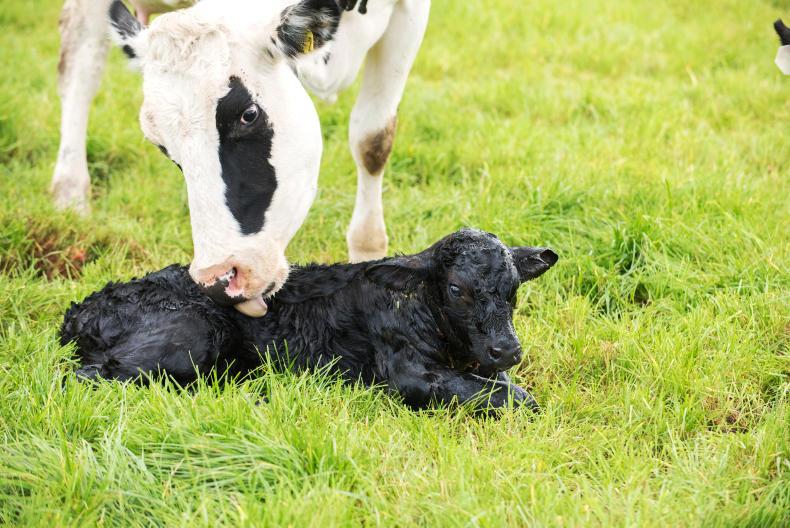Farm organisations are fighting to ensure reviews of farm medicine rules do not lead to higher vet bills and more red tape. Farmers already spend an estimated €150m per year on antibiotics.
Health and veterinary experts are drawing up a national strategy aimed at reducing use of antibiotics to slow the spread of resistance.
The aim is to maintain the effectiveness of these medicines for protecting human and animal health.
The group, jointly chaired by Department of Agriculture chief vet Martin Blake, meets next on 6 April and is close to finalising recommendations.
The EU Commission, meanwhile, is carrying out a periodic review of its farm medicine rules.
IFA and ICOS are concerned that these reviews will be used by groups with their own commercial interests to clamp down on supply of medicines. They are particularly determined to defend 12-month prescriptions and a choice of where they buy medicines.
At present the veterinary prescriptions farmers obtain for key farm medicines are valid for 12 months, allowing farmers buy medicines as required through the season, without paying for additional vet calls.
Farmers can use a prescription to buy certain medicines from pharmacies or other approved outlets offering best value and different brands, as well as from their vets.
Any tightening of rules under either heading would drive up farmers’ costs.
Mastitis control
Dairy co-ops are concerned that any change in the prescription rules for approved mastitis control programmes would increase costs on farmers – or reduce effectiveness. By combining milk recording and milk testing, these programmes pinpoint which cows need dry cow and mastitis tubes – and which don’t – without the cost of vet calls to individual farms.
ICOS has compiled data showing that use of antibiotic intramammaries over the past five years under mastitis control programmes has generally decreased while use of protective teat seals has risen. This shows that the current rules are working, it says.
Commercial interests
Draft conclusions from the interdepartmental committee on antimicrobial resistance (AMR) are focused too narrowly on farmers, IFA animal health chair Bert Stewart warned this week. They point towards building biosecurity standards into farm schemes such as Knowledge Transfer and quality assurance audits.
“There must be a focus instead on those who benefit most, commercially, from the sale and supply of antibiotics,” he said.
“Veterinary medicine costs are a significant annual cost which farmers strive to keep to a minimum.
“Attempting to undermine proven prescribing procedures will not address AMR but will increase costs and hit animal health and welfare on farms.”
The interdepartmental AMR group is led by the departments of health and agriculture and includes representatives of IFA and ICMSA, among other bodies.
Read more
Full coverage: antibiotics
Farm organisations are fighting to ensure reviews of farm medicine rules do not lead to higher vet bills and more red tape. Farmers already spend an estimated €150m per year on antibiotics.
Health and veterinary experts are drawing up a national strategy aimed at reducing use of antibiotics to slow the spread of resistance.
The aim is to maintain the effectiveness of these medicines for protecting human and animal health.
The group, jointly chaired by Department of Agriculture chief vet Martin Blake, meets next on 6 April and is close to finalising recommendations.
The EU Commission, meanwhile, is carrying out a periodic review of its farm medicine rules.
IFA and ICOS are concerned that these reviews will be used by groups with their own commercial interests to clamp down on supply of medicines. They are particularly determined to defend 12-month prescriptions and a choice of where they buy medicines.
At present the veterinary prescriptions farmers obtain for key farm medicines are valid for 12 months, allowing farmers buy medicines as required through the season, without paying for additional vet calls.
Farmers can use a prescription to buy certain medicines from pharmacies or other approved outlets offering best value and different brands, as well as from their vets.
Any tightening of rules under either heading would drive up farmers’ costs.
Mastitis control
Dairy co-ops are concerned that any change in the prescription rules for approved mastitis control programmes would increase costs on farmers – or reduce effectiveness. By combining milk recording and milk testing, these programmes pinpoint which cows need dry cow and mastitis tubes – and which don’t – without the cost of vet calls to individual farms.
ICOS has compiled data showing that use of antibiotic intramammaries over the past five years under mastitis control programmes has generally decreased while use of protective teat seals has risen. This shows that the current rules are working, it says.
Commercial interests
Draft conclusions from the interdepartmental committee on antimicrobial resistance (AMR) are focused too narrowly on farmers, IFA animal health chair Bert Stewart warned this week. They point towards building biosecurity standards into farm schemes such as Knowledge Transfer and quality assurance audits.
“There must be a focus instead on those who benefit most, commercially, from the sale and supply of antibiotics,” he said.
“Veterinary medicine costs are a significant annual cost which farmers strive to keep to a minimum.
“Attempting to undermine proven prescribing procedures will not address AMR but will increase costs and hit animal health and welfare on farms.”
The interdepartmental AMR group is led by the departments of health and agriculture and includes representatives of IFA and ICMSA, among other bodies.
Read more
Full coverage: antibiotics






 This is a subscriber-only article
This is a subscriber-only article










SHARING OPTIONS: